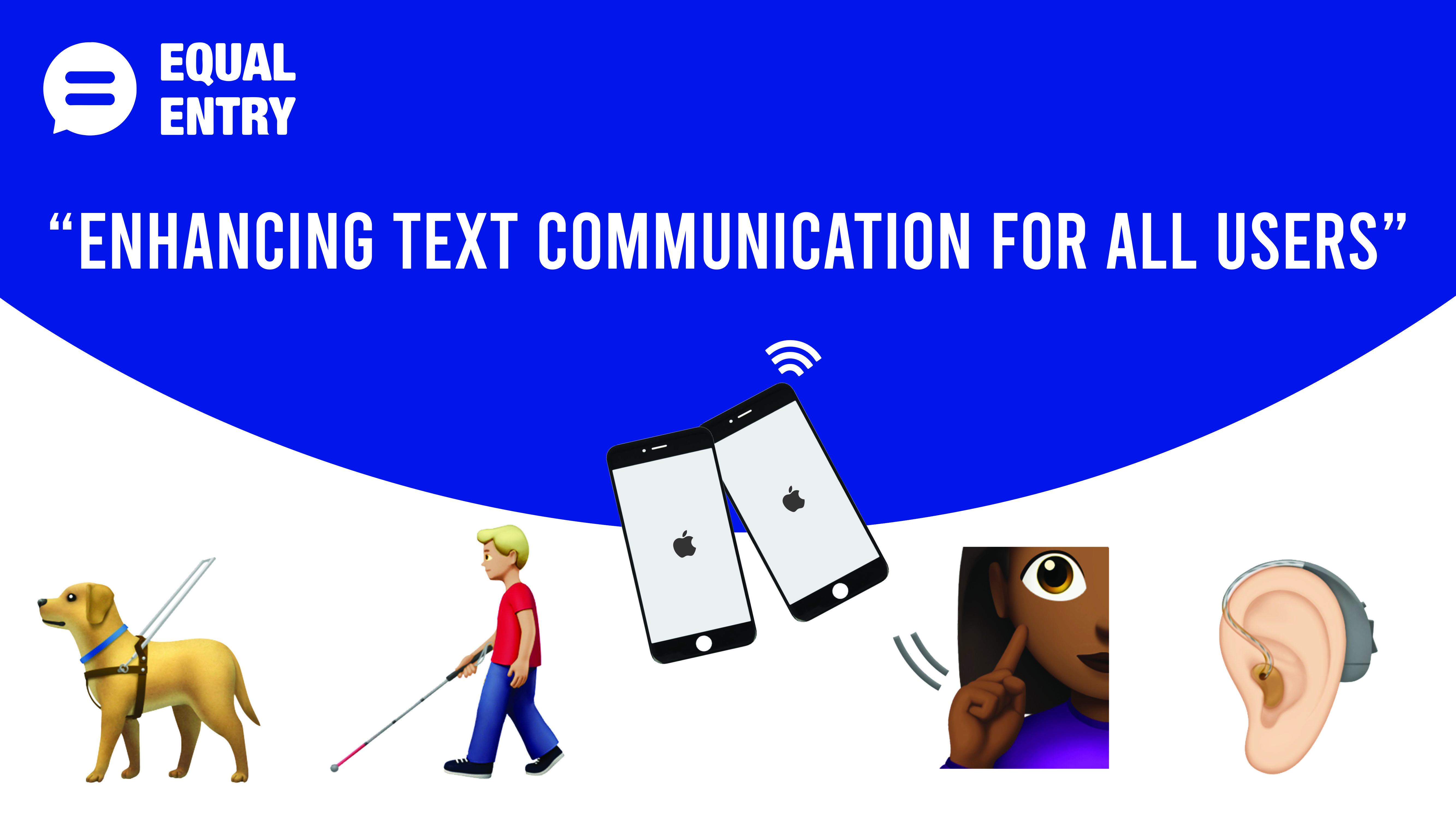Summary

Introduction
Emoji have become an essential part of text conversations. They are the closest thing we have to a universal language that anyone can understand, including voiceover users and others with disabilities. Even though they are essentially tiny pictures, they are completely accessible using Voiceover, so I can participate equally with everyone else. I can make a message sound friendlier with a smiley. I can be sarcastic, sad, happy, or downright weird just with emoji. I can even replace entire words (or sentences) with an emoji. For example, when I board the bus to go to work every morning, I send my mom a sun, a red heart, and a bus, as a way to say “good morning, I’m on the bus, love you”. It has become part of my morning routine.
Emoji make it so easy to communicate because there are so many. But surprisingly, there are no disability emoji apart from a blue wheelchair symbol. People with different skin tones, relationships, careers, and activities are represented. I can even incorporate a business man levitating into my conversation (who uses that, anyway)? But I can’t talk about my guide dog, who is essentially my best friend as well as the one who helps me get around every day. People with wheelchairs, prosthetic limbs, or hearing loss don’t have the option to include that in conversations either.
Fortunately, this is changing in the fall, with the addition of 59 new emoji this fall that were approved by the Unicode Consortium earlier this year – likely with iOS 13 and Android Q. The new emoji include a guide dog, a service dog with a vest, a person signing “deaf” in ASL, a person walking with a cane, a person in a wheelchair, prosthetic limbs, among others.
How did we finally get accessibility Emoji?
While the new accessibility emoji will be available this fall, they have been in the works for a while now. Technically, anyone can submit a proposal for a new emoji to the Unicode Consortium — the nonprofit that works to promote international standards and data. Unicode is the standard that specifies how text (including languages) is represented in software. In the case of disability emoji, Apple first proposed them in early 2018. Proposals must be very detailed and include a justification for the new emoji, how often it is expected to be used, compatibility with existing systems, distinctiveness (whether people will be able to recognize what the emoji represents), among other factors. As justification for its disability emoji proposal, Apple pointed out that, “Adding emoji emblematic to users’ life experiences helps foster a diverse culture that is inclusive of disability.”
Not all emoji are accepted. Emoji proposals are often rejected if they are logos, if the concept they are representing is transient or a “fad,” if they are overly specific, or if they represent a specific person. For example, Apple’s proposal includes a service dog with a vest and a guide dog with a harness. These two types of dogs are different enough to justify two emoji, but there will not be an emoji for all the specific functions a service dog with a vest might perform, or different breeds of service dogs.
Emoji Timeline
Once the proposal has been submitted, it is reviewed by the Unicode Consortium and forwarded to the Emoji Subcommittee. If it is strong, the Subcommittee will forward it to the Unicode Technical Committee, which then provisionally accepts the proposal, and advances it to “draft candidate.” Only a limited number of emoji are released each year to ensure that venders (such as Apple, Google, and Facebook) can deploy them. If an emoji is chosen for release for the upcoming year, it is considered a final candidate. The Consortium tries to release a variety of Emoji each year – animals, foods, smileys – instead of releasing all of them in one category. Individual platforms then decide the specific design for the emoji so that it fits with the rest of the platform’s design.
So, after this year and a half process, we will finally have disability emoji this fall. I am looking forward to incorporating my guide dog into conversations. And given the universality of emoji characters, this development might raise awareness of service dogs in places that do not yet accept them as part of daily life.
What do you think?
What emoji do you wish were available? Which of the new emoji are you looking forward to using most?